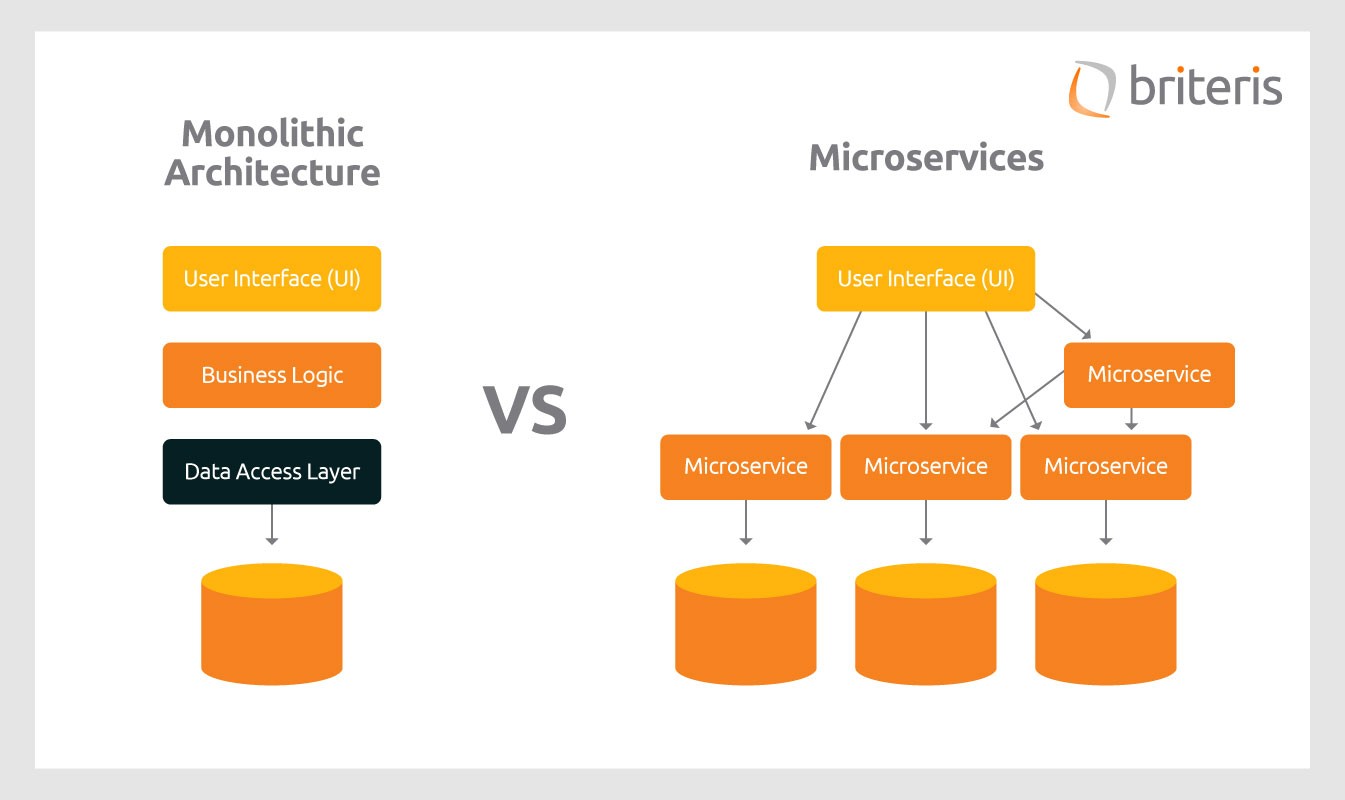What are microservices? What are their benefits? What should I be aware of when using them?
Companies have increasingly invested in microservice-based architectures for their products and systems as a reliable approach to accelerate delivery of new versions, increase performance, improve customer experience and reduce costs.
According to a TechRepublic Premium’s survey titled Microservices bring faster application delivery and greater flexibility to enterprises, 73% of respondents have already incorporated this type of architecture into their application development. For those using microservices, the key benefits are fast implementation (69%), flexibility to respond to changes (61%) and agile expansion of new application features (56%).
Microservices are a type of software architecture based on a set of modular applications that can complement each other. In practice, this means that each module has its own interface and runs its own process and usually communicate using APIs.
Many consider microservices to be the evolution of Service-Oriented Architecture (SOA) and a model opposed to the monolithic architecture, in which the application modules are concentrated in a single process and respond to the same database, resources and memory.

Implementation benefits
The microservice-based development of applications allows us to create more flexible, scalable and maintenance-friendly systems when compared to monolithic systems. In addition, it simplifies the cloud migration. Due to these features, companies like Netflix, Amazon and Spotify have strongly adopted this model.
To get an idea of how the microservice structure works in practice, one of Iteris customers had an application with more than 60 million users (with peaks of millions of simultaneous access), organized in a monolithic architecture with a single database. Due to this scenario (and some other factors), the system was slow and crashed frequently due to lack of resources. In addition, scaling the infrastructure used to be hard.
Iteris segmented this application and its database, so that each part of the application is separated into different modules in the cloud. Service performance has been optimized with scalability and significant cost reduction. The slowness and crash issues have been solved, and the user experience has been improved.
Check out some of the key benefits of microservices below:
- Flexibility: Reusing microservices in different projects and different business contexts.
- Different technologies and programming languages for each service.
- Scalability: Improved ability to keep up with operation growth without compromising reach and productivity.
- Decentralized approach: Implementing, improving and correcting each service independently.
- Optimized security: As each piece has its own database, a potential breach in one service does not affect the other areas.
What should I be aware of when using microservices?

By considering all these benefits, it could be tempting to say that every system should be developed using microservice architecture. However, this is not true. As with any technology, there are scenarios in which this architecture works to its maximum capacity, but there are pitfalls and disadvantages that we have to keep in mind.
- Testing and debugging can become cumbersome as logs are segmented across services and testing the complete solution requires all essential services in place.
- Multiple databases can make management harder and become a bottleneck among services in high data volume scenarios.
- Complex communication among services. As each service operates independently, they need to exchange information, and this can be a challenge during implementation.
- Small companies or companies without a mature development culture may suffer from slow implementation due to the complexity imposed by the microservice architecture.
Microservices can increase the multidisciplinary IT team’s efficiency, allowing professionals to work on separate elements without affecting other application parts. This is particularly the case when following DevOps for continuous delivery and integration practices. However, experience and knowledge are required to avoid the pitfalls that a more complex architecture imposes on the IT team.

